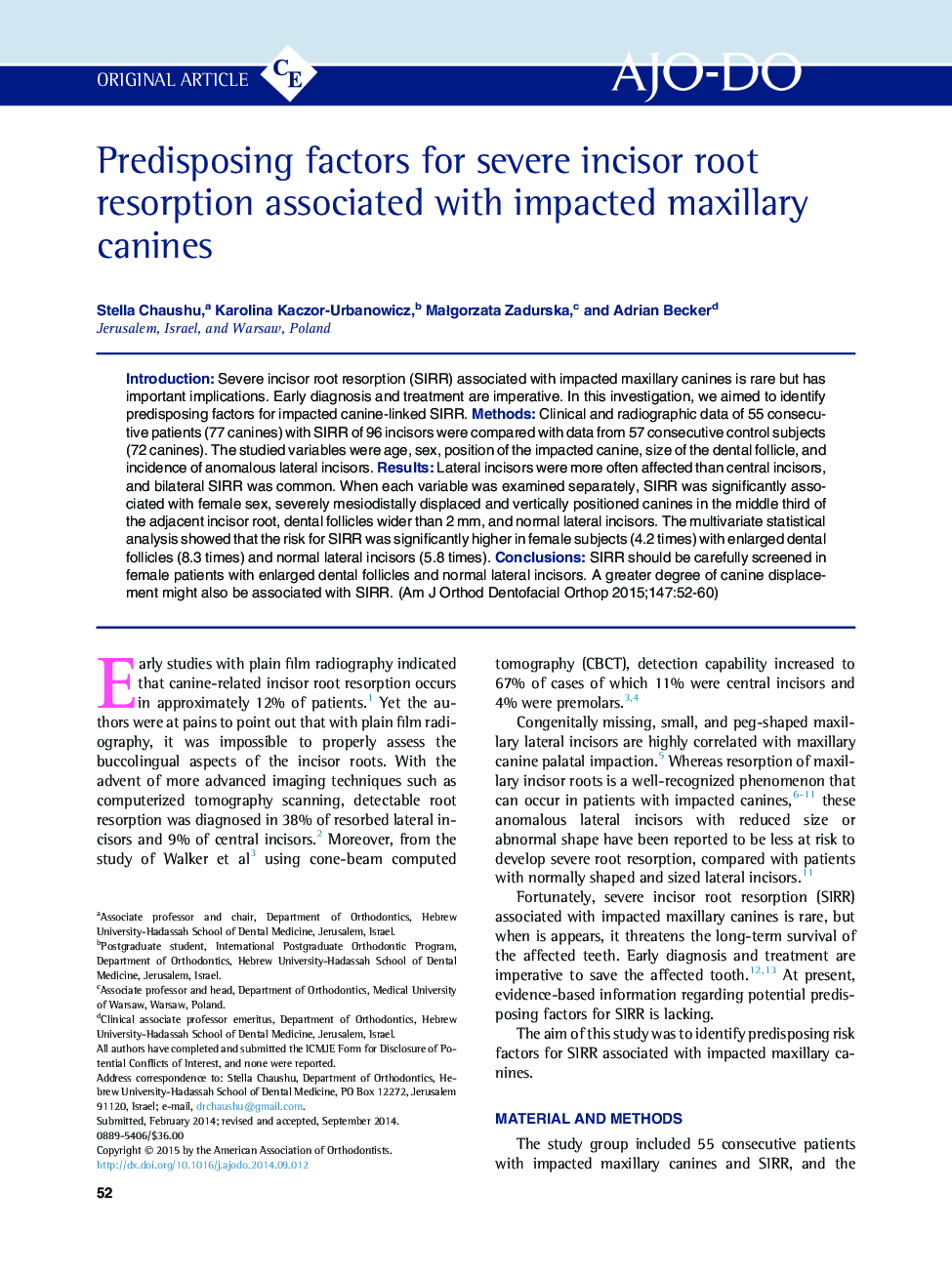| Article ID | Journal | Published Year | Pages | File Type |
|---|---|---|---|---|
| 3116147 | American Journal of Orthodontics and Dentofacial Orthopedics | 2015 | 9 Pages |
•Female patients with enlarged dental follicles and normal lateral incisors should be screened for severe incisor root resorption.•A greater degree of canine displacement might also be associated with severe incisor root resorption.
IntroductionSevere incisor root resorption (SIRR) associated with impacted maxillary canines is rare but has important implications. Early diagnosis and treatment are imperative. In this investigation, we aimed to identify predisposing factors for impacted canine-linked SIRR.MethodsClinical and radiographic data of 55 consecutive patients (77 canines) with SIRR of 96 incisors were compared with data from 57 consecutive control subjects (72 canines). The studied variables were age, sex, position of the impacted canine, size of the dental follicle, and incidence of anomalous lateral incisors.ResultsLateral incisors were more often affected than central incisors, and bilateral SIRR was common. When each variable was examined separately, SIRR was significantly associated with female sex, severely mesiodistally displaced and vertically positioned canines in the middle third of the adjacent incisor root, dental follicles wider than 2 mm, and normal lateral incisors. The multivariate statistical analysis showed that the risk for SIRR was significantly higher in female subjects (4.2 times) with enlarged dental follicles (8.3 times) and normal lateral incisors (5.8 times).ConclusionsSIRR should be carefully screened in female patients with enlarged dental follicles and normal lateral incisors. A greater degree of canine displacement might also be associated with SIRR.
